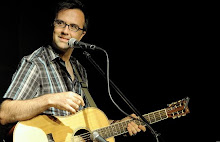You have posted quite a few striking videos of your playing on YouTube and have generated some strong interest. How did you get into doing this, and how has the experience been for you?
At some point I think I had posted about 80 videos. Everything from older footage of rock stuff, to newer content I created just for YouTube, being either performance or educational material. I took about half of it down to try and manage some quality control, I didn’t want to just post anything.
Basically after playing rock guitar and recording and touring for 20 years I came to the realization that I had become a pop guitar player and was relying on singers as a foundation for my musical work, even though I had hours of recorded guitar music at home that no one had ever heard. I decided I was only going to play guitar music and YouTube was an easy and obvious choice to get my material out there and try some things that were initially way outside of my comfort zone. I wanted to get really specific and do things that I wasn’t seeing much of, like talk with Steve Howe for an hour and cover topics outside but not unrelated to guitar. Or I’d post a mini movie shot by photographer Edward Pond
What's your sense of the YouTube guitar community? Anything about it that surprised you at first?
Yes, what surprised me most was how many guitar players and fans there are out there that have interests outside the mainstream. Something like YouTube comes along and provides an outlet for content that a lot of music fans crave. In the last decade, if you’d see an interview on TV or in print it was usually reduced to a sound bite, and more recently popular music is being reduced to a ring tone. On YouTube you can post anything, so I tried to give really in-depth stuff, and people seem to respond. I can get feedback from YouTube every day, a lot of positive comments, as well as guitar questions. Out of every 100,000 views I might get only one or two really terrible comments, so it’s really cool.
What guitars and amps do you use most?
For electric guitar, I only play my 1968 Gibson ES175D
I’ve been using a pair of Fender Champs for years. They’re the Champ II models designed by Paul Rivera 30 years ago, I’ve got Celestions in both. I like my Pignose
Effects?
Line 6 M13
You're involved with Fingerstyleguitar.ca - what kind of work do you do with them?
Initially I helped Randy Finney out a lot in the early days when he started it back in 2005. I ran open stages, created podcasts, and produced a compilation CD for the association that featured Toronto area guitar players. I was also able to consult on certain logistics of touring and technical support, and refer Randy to some friends that have backgrounds in design, photography, media and sound engineering. Fingerstyleguitar.ca has become a hub in Canada to promote mostly international guitarists. Randy is able to bring the biggest names in guitar to Canada for some very successful single concerts and tours. There is less emphasis on the local scene, but that’s fine with me, I prefer that it has grown - it’s up to someone else at this point to keep the local thing going.
Have you noticed any changes in guitar trends over the course of your career?
Yes, and it’s a big one. There isn’t really any guitar on the radio, not like there used to be. Guitar has become popular with Rock Band and Guitar Hero and there is still a huge interest in other areas of guitar. But, the demand for good guitar intros and solos in pop music just isn’t there, so there is less work. A lot of good recording engineers can play guitar well enough for what is required in some pop music, so I’d say why bother to call a guitar player for a session?
The goal for me is to create a brand or franchise for my own music. Playing the music of other people has never been very satisfying for me, but I appreciate others who do it well.
Any career highlights that you'd like to share?
Jamming "Xanadu" with Alex Lifeson
Thanks to David Barrett for taking the time to answer my questions. Check out David's website for more information.












No comments:
Post a Comment